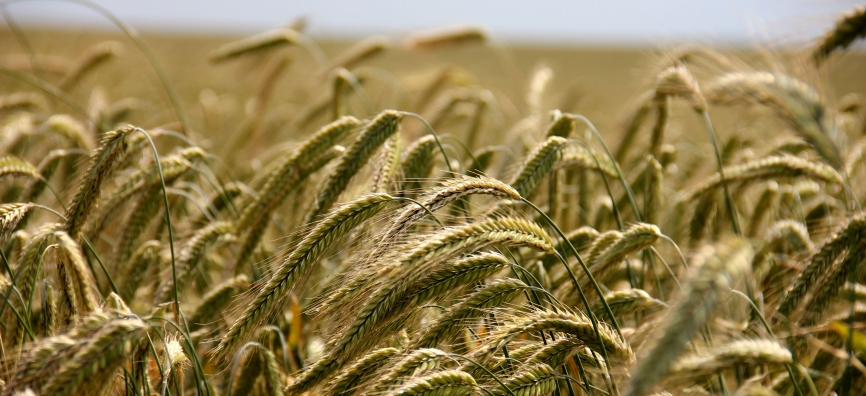Improving plant breeding productivity

NEW RESEARCH CREATES PRACTICAL SYSTEM TO DRASTICALLY IMPROVE PLANT BREEDING PRODUCTIVITY FOR WORLD’S KEY STAPLE CROPS, INCREASING FOOD SECURITY
The ‘HELP’ plant breeding strategy for self-pollinating crops is an innovation that ’crosses the best with the best’ and proceeds only with ‘the best,’ allowing crop breeders to identify 3-5 times more high-productivity varieties of cereals, legumes and other important food crops, and improve the overall quality of food crop breeding. The approach can be put into action with minimal new investments – bringing benefits to commercial breeders and smallholder farmers in low-income countries.
A new approach to food crop breeding recently published in the journal, Crop Science, now makes possible more efficient breeding for some two-thirds of the world’s most important food crops. This innovation, focused on self-pollinating crops such as wheat, rice, peas and beans sets out new processes and techniques that crop breeding programs can use to get significant productivity gains compared to their current breeding practices.
These new research findings synthesize learning from 70 years of crop breeding science and practice to create the improved approach called HELP - Hybrid-Enabled Line Profiling. It brings more superior crop varieties to the world’s population, and has specific benefits for nutrition and food security in low-income countries, for smallholder farmers and their rural communities.
The HELP concept was developed by plant geneticists, Dr. Ir. Maarten van Ginkel and Prof. Rodomiro Ortiz. They say that it combines existing and recently identified techniques, resulting in a strategy that exceeds existing breeding concepts, bringing the potential to improve the productivity and cost efficiency of all breeding programs for self-pollinating crops. These include widely consumed staples such as wheat, rice, barley, rye, oats, pea, cowpea, common bean, soybean, lentil, chickpea, groundnut, oilseed, and forage crops for animals.
For plant breeders in national and commercial programs, current approaches to improve self-pollinating crops are costly and time-consuming. Typically, hundreds, even thousands, of hybrid plant crosses are needed to produce a better-performing variety of these food crops – a process which can take up to a decade. As a result, improved varieties of these crops are released to market more slowly than for cross-pollinating crops such as maize or canola, whose breeders can produce better performing crop varieties directly with first generation hybrid crosses.
For low-income countries, the current plant breeding process for self-pollinating crops means that their populations miss out on, or have delayed access to, some of the highest-performing food varieties possible.
HELP innovates by integrating into a new package, a combination of practical techniques that breeders can use to rapidly identify the highest-performing and most robust plants and hybrid crosses for breeding. This includes a process for two-stage research trials in different farming ecosystem types, and rapid seed multiplication for the new crop varieties. HELP’s core principle is to ‘cross the best with the best’ from different robust ‘parents’; to rapidly identify high-performing hybrid crosses, that will then integrate best performance in the next generation of crops.
This approach is especially beneficial for national crop improvement programs in low-income countries, explains van Ginkel: ‘’Using HELP, national programs can focus their breeding activities on only the very best hybrid crosses, to significantly improve crop performance, and do this with minor new investments. This brings huge increases in effectiveness to the breeding pipeline. HELP offers breeding program managers a smart way to adjust their current breeding practices to produce better crop varieties for their farmers. HELP is especially beneficial for farmers and rural communities in the world’s low-income countries.’’
The authors say that with HELP – in the same 5-7 year period that is needed with today’s conventional crop breeding to develop one new variety – 3 to 5 times more high-productivity varieties can be bred and identified for release to farmers.
HELP also offers a higher-investment-higher-return scenario that delivers even better results using high-precision technologies, such as molecular genetics and high-throughput phenotyping, explains Ortiz. “But an important aspect of HELP’s innovation is how it benefits low-income countries. It can be put in place by any country at today’s cost and infrastructure levels, with minor additional investments,” he says.
The authors encourage countries to put HELP into action alongside current breeding activities, for direct comparison between the two approaches. They call on decision-makers responsible for agriculture, rural development and food security to create the conditions for crop breeders to test HELP in their national programs – by providing guidelines, training and small investment schemes.

